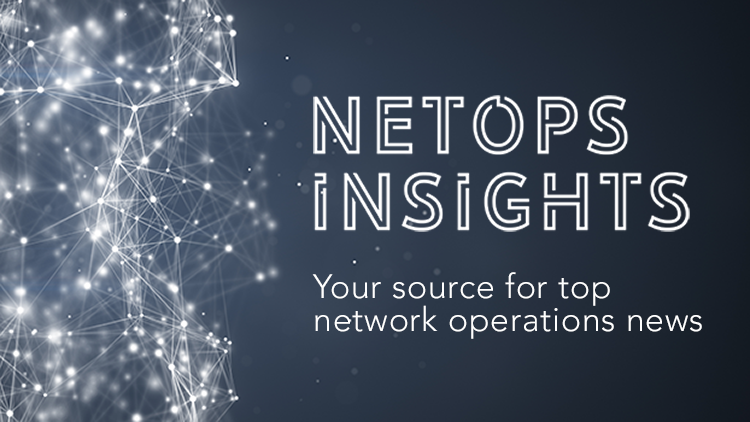Avoid SD-WAN Pitfalls, Low-Code Becomes a Priority & Automation for 5G

Week of November 10th, 2019
The Challenges Of SD-WAN Network Planning In An Era Of Unknowns
As interest in software-defined wide-area networks (SD-WAN) continues to rise, enterprises are coming face to face with the challenge of planning an SD-WAN migration that will serve the company today and into the future, forcing them to deal with a number of unknowns. The uncertainties include how fast the company will grow, whether new sites will be required, and what revenue and cash flow will look like. Existing and emerging security threats must be considered as well. About the only certainty is that cloud services will continually factor into the equation.
‘Low-Code’ Becomes High Priority As Automation Demands Soar
Chief information officers, on the hook to automate manual and repetitive business processes, are increasingly turning to tools designed to create applications quickly, without the sweat of writing and debugging lines of code. Collectively known as “low-code,” these tools have been available in some form for decades. But they have grown more popular with information-technology staff and other departments as workplace automation grows and young, mobile-savvy people join the workforce. With low-code, employees can quickly make apps by picking, dragging and dropping from a collection of ready-made software building blocks.
Migrating To SD-WAN? Avoid These Pitfalls, Say IT Leaders
Whether you’re switching from MPLS or Internet VPNs, SD-WAN can jumpstart network performance, agility, and scalability, particularly for cloud applications. However, as with any migration, there can be challenges and surprises. Don’t squash productivity with unplanned outages or security breaches. Plan your migration carefully, ask the right questions, and cover your bases. Here are some key pitfalls to avoid from those who’ve been there.
AT&T Touts Virtualization, Automation For Enterprise 5G Security
While awareness of 5G-related cybersecurity risks is high among enterprises, more needs to be done to prepare, according to a new report from AT&T’s cybersecurity unit, which suggested implementing tools like virtualization and automation. In AT&T’s most recent Cybersecurity Insights Report, based on a survey by 451 Research, nearly three-quarters of respondents indicated medium-high or high level of concern in terms of the potential impact of 5G on security and 76 percent expect brand-new security threats to emerge from 5G.
SD-WAN As MPLS Replacement: Why The Internet Isn’t Enough
As companies turn to SD-WAN services, they’re often looking to migrate away from expensive MPLS services at the same time and employ Internet services instead. But the public Internet doesn’t provide the kind of predictable performance that enterprises need, and it can introduce unacceptable security risks. A sound alternative is a global, privately managed cloud-based network that can provide the consistent performance and low latency that enterprises demand, but at a fraction of the cost of MPLS – and with security built in.
Google Cloud Sets Sights On Network Intelligence Automation
Google Cloud’s new network intelligence platform could potentially automate thousands of networking jobs and speed up cloud migrations to new levels of efficiency. The Network Intelligence Centre is designed to help customers monitor, verify, and optimize networks across on-premise data centers and in the cloud. Google developed the new platform because organizations are adopting multi-cloud implementations and hybrid deployments as part of their cloud strategy.
Industry Voices—Raynovich: Key Trends For SD-WAN Managed Services
Both service providers and cloud providers alike are ramping up their launches of software-defined wide-area networking (SD-WAN) managed services to take advantage of booming demand from enterprises that see several benefits. In an SD-WAN managed service, the service provider delivers the customer the hardware, software and network connections to set up their global WAN to improve connectivity, security and performance to cloud applications and data centers. The service providers can also provide value-added services such as bundled security, traffic-monitoring and service-level agreements (SLAs), as well as management features.
Tight Wi-Fi Integration Is Key To Successful SD-Branch
The promise of SD-Branch is that by collapsing network functionality in branch offices to a unified platform, enterprises can reap benefits in speed of deployment, ease of operation and cost. Since Wi-Fi is a critical piece of local area communications for many branch sites, improved integration, security and management of Wi-Fi is becoming increasingly important to evaluating the benefits of SD-Branch solutions.
5G Industrial Automation Isn’t Right Around The Corner
Operators will invest up to $1 trillion in 5G networks between 2018 and 2025, according to GSMA. The return on that investment isn’t expected to come from charging consumers more for smartphone services, although that will almost certainly be part of the plan. The biggest returns for operators could well come from new network efficiencies and new enterprise use cases, especially industrial use cases, according to those in the industry.
Achieving Organizational Change Through Scaled DevOps
The rapid pace of technological change has had a major impact on customer expectation, forcing IT decision-makers to adopt agile processes to ensure the continual delivery of innovation. This has led to the mass adoption of DevOps practices, with 77 percent of organizations indicating they rely on DevOps to deploy software, or plan to, in the near future. But, for DevOps to streamline organizational change, it can’t be a one-off initiative. Scaled DevOps requires aligning team members on common goals and best practices and establishing a DevOps maturity model tailored to a company’s individual needs.
